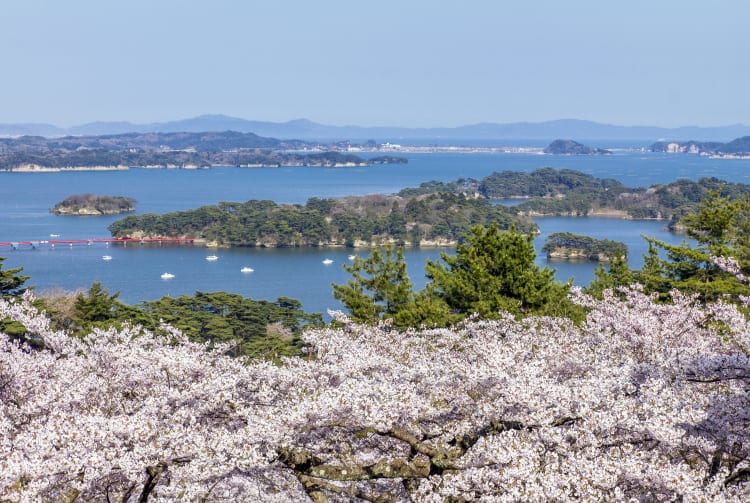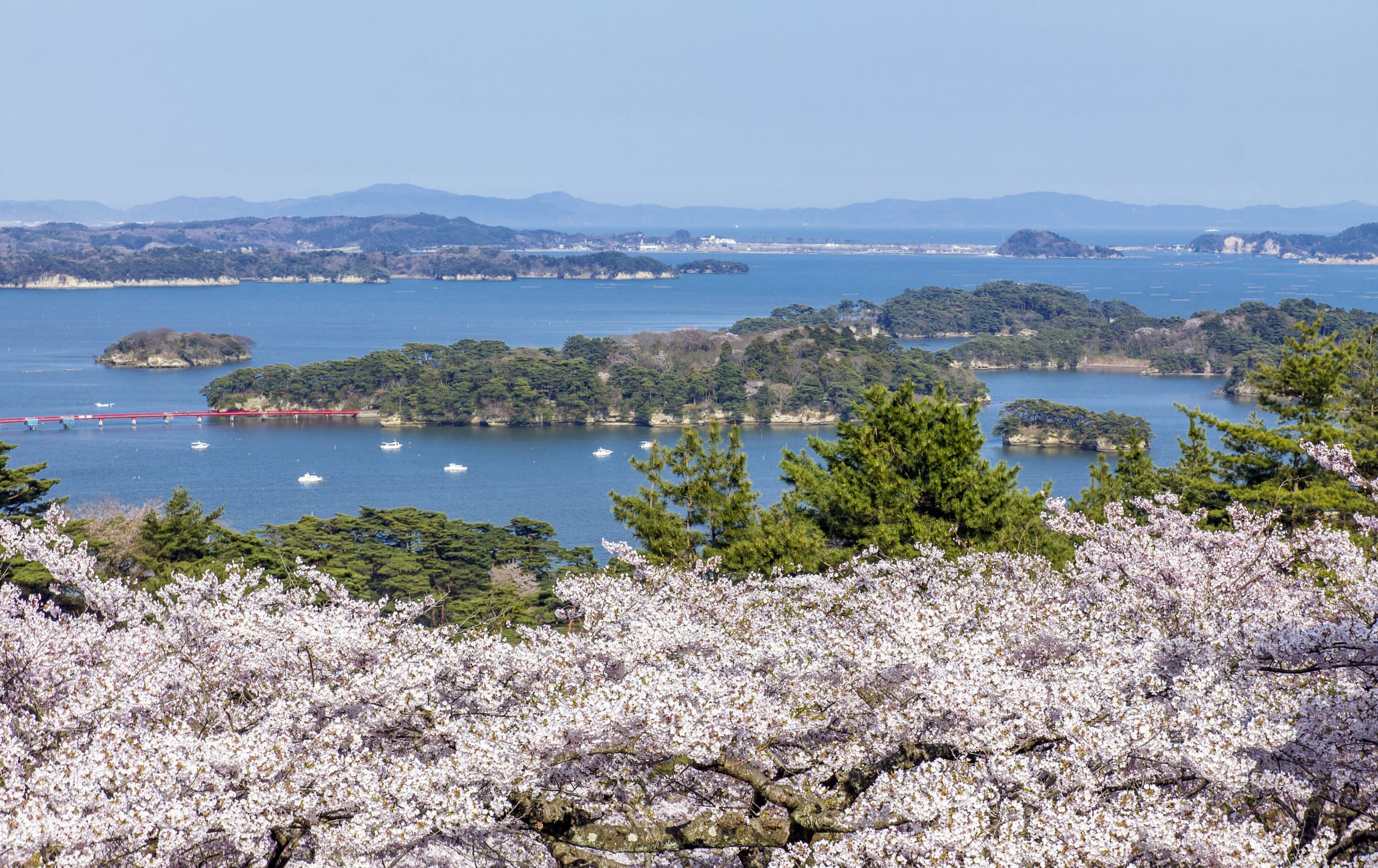A bay of pine-covered islands and scenery worthy of a Basho haiku
The 260 islands of Matsushima Bay, also famous for Matsushima Bay Cruises are collectively considered one of the "Three Most Scenic Spots of Japan." Even legendary haiku poet Matsuo Basho (1644-1694) struggled to describe the beauty he encountered here on the coast of Miyagi Prefecture in Tohoku.
You can walk to a few of those hundreds of islands and explore black and red pine forests and ancient temples, which includes Zuiganji Temple, the family temple of the powerful Date clan that ruled this region.
Don't Miss
- Taking a sightseeing cruise around Matsushima Bay
- Exploring the history and hidden features of Zuiganji Temple
- Sampling the superb seafood of Matsushima
How to Get There
Matsushima is accessible by train and bus from major cities in Tokyo and the Kansai area.
From Tokyo take a 90-minute bullet train ride to Sendai on the JR Tohoku Shinkansen. An approximately 40-minute train ride on the Senseki Line gets you to Matsushima. Note: Get off at Matsushimakaigan Station (served by the Senseki Line), not Matsushima Station (served by the Tohoku Main Line), since the latter is far from the tourist attractions.

Take in the view
Take a walk to Matsushima's coastline and enjoy the scene at your own pace. For a loftier view of the landscape and the 260 islands in the bay, look out over the landscape from higher ground.
Other fine sights include the three islands with bridges that offer unique views, and the four recommended viewing spots—Ogitani, Tomiyama, Otakamori, and Tamonzan—collectively known as Matsushima Shidaikan. They take some time to reach but live up to their reputations.

Hop on a sightseeing cruise to enjoy the most popular close-up view of the islands. One course will take you on a loop of the bay, while the other runs one-way from Matsushima to the city of Shiogama. The sightseeing cruises run year-round. A bilingual audio announcement and maps detail the history and names of some of the more unusual islands.
Three footbridges to three islands
Three of Matsushima's islands are connected to the mainland by footbridges, and easy to explore.
The central island adjacent to the ferry terminal is home to the small Godaido Temple, which has become a symbol of Matsushima. It is believed that a temple called Bishamondo was built on the island in the early 9th century. The current structure was built in 1604 by Date Masamune, the first lord of Sendai. The ornately carved hall is the oldest existing example of Momoyama architecture (1573–1615), in the Tohoku region.

Fukuura Island is easily spotted thanks to its 252-meter-long red bridge. For a small entrance fee, you can cross and wander around the forested island. Follow the paths to the opposite side for another splendid view of the bay.
The other island you can walk to is Oshima Island. Exit Matsushima-Kaigan Station, head for the shore and then go south along the coast for five to ten minutes. The temples and hand-carved meditation caves used by ancient monks are perfect places to contemplate life.
Two temples of note
Zuiganji Temple is the most important Zen temple in the Tohoku region. The temple was originally founded by the monk Jikaku Daishi (Ennin) as Enpukuji Temple, a Tendai sect temple, in 828. It prospered during the Kamakura period (1185-1333) as a Zen temple patroned by Hojo Tokiyori (the fifth ruler of the Kamakura shogunate), but later fell into disrepair. In 1609, Date Masamune, the lord of the Sendai domain, rebuilt the temple as Zuiganji Temple over the course of five years to serve as the Date family's temple.
Next to Zuiganji Temple is Entsuin Temple, which was built by the Date clan leader Date Tadamune in 1646. The temple was constructed to mourn his son Mitsumune, who died at the young age of 19. The mausoleum holds a statue of the son on a white horse surrounded by Western motifs. Entsuin Temple has both a Japanese-style garden and Western-style rose garden. The autumn leaves here are particularly beautiful.
Feast on the bounty of the bay
Matsushima offers plenty of freshly caught, succulent seafood at its many restaurants and food stalls at Matsushima Fish Market. Locals highly recommend the oysters, including oyster burgers, and anago (saltwater eels) and grilled squid.
Sample green tea on a veranda overlooking the sea
For a Japanese tea experience, visit Kanrantei. This teahouse was a gift from the ruler of Japan, Toyotomi Hideyoshi, to Sendai's daimyo Date Masamune. The Sendai feudal lord's son later moved it to Matsushima. Sip on bitter matcha green tea paired with a locally-produced Japanese sweet out on the engawa (an external corridor often used as a veranda), which offers a stunning view of the bay below.



























































